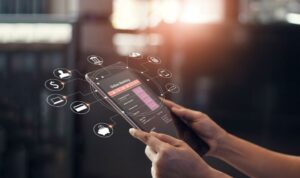Content
- What is Requirements Traceability Matrix (RTM) in Testing?
- Requirements Traceability Matrix Tools
- Food law general requirements
- Prepare a traceability matrix template
- Find PMP® Certification Training in these cities
- Implementing a Document-based Requirements Traceability: A Case Study
- 4.1.5 Ease of integration of disparate engineering data
These are represented by the metaclasses TraceRules, Change, Warning and Error (see Fig. 3). At first glance, this would appear to introduce a high degree of complexity, but that is not the case. Source and target metamodels define the relationship between concepts and need to be modelled only once.
It is the tool in charge of the MonitoringModel identifying the changes (the green area in Fig. 3). It deals with each error by sending a warning if a change is detected, or an error message to the team if a problem is detected and cannot be solved automatically. Conflicts are thus resolved semi–automatically, while conflict detection is automatic. Functional Testing, which was automatically derived from the functional requirements by transformations and offered a first validation of the requirements.
A real software system has a high number of requirements, attributes, relationships, etc., so traceability is critical in order to guarantee consistency in software products. Abstract Although traceability is often a suggested requirement for general software development, there are areas such as airborne systems, where traceability is a compulsory part of the development process. This paper describes a tool chain that is able to generate and to follow traceability links across model-to-model and model-to-code transformations, and capable of providing navigability support along these traceability links.
For more details on the process of systematic evidence generation, the reader is referred to Gutiérrez, Escalona & Mejías . At least one TestUIStep is generated from each UIStep and at least one TestStep is generated from each Step. In this case, as the loop was not considered, only one element was generated for each UIStep and for each Step. In the generation process, a scenario, represented https://globalcloudteam.com/ as a simple activity diagram, shows the steps that a user should execute in order to partially validate a part of the activity diagram represented in Fig. In the previous scenarios, decisions and values were predefined by the transformation that generates each test. Thus, although the decision element is retained for the sake of readability, only one path is given for each test.
Shows an example of traceability between input requirements and software requirements. In the example, there appears a system requirement that is not covered; it is thus necessary to add a justification to show that nothing has been forgotten. This vision of the process takes into account the problem of compatibility of the data produced for different subsystems. In case different data production processes were implemented (one per subsystem and/or equipment), there must be a process to ensure compatibility and consistency.
Are you creating a multifaceted product with both software and hardware components? Will you be required to prove functional safety or regulatory compliance? In these cases, you’ll need a requirements management tool with bidirectional traceability and compliance templates you can easily export. Some development teams are still tracing requirement relationships using Word or Excel documents and collaborating via email. A Requirements Traceability Matrix is one example of a document that manually traces elements of requirements management including, business requirements, objectives, design elements, and test cases via a spreadsheet.
What is Requirements Traceability Matrix (RTM) in Testing?
But it’s a pressing need for industries with something to prove. When done well, traceability follows the life of a requirement. So, it makes sure that your requirements fulfill your original goals. For example, it gives you proof that you met compliance requirements. A Requirements Traceability Matrix is a tool that provides teams with the ability to easily trace requirements from end-to-end. This is a simple template to capture requirements traceability.
Backward to requirementsbegins at performed work andtraces to its requirement. It gives visibility into why specific items were created and how different pieces of a system fit together. Tracing in this way also allows testers to find gaps or missing requirements. Like forward traceability, there are two kinds of backward traceability.
Requirements Traceability Matrix Tools
Here’s a discussion about bidirectional traceability and how it may be achieved. It means tracing the code from requirements and vice-versa throughout a Software Development Life Cycle . Briand L, Labiche Y, Yuea T. Automated traceability analysis for UML model refinements.
Companies that choose a best-of-breed approach solve the traceability challenge with requirements management tools that provide a complete traceability model and integrations for the best of breed tools. In order to ensure traceability to artifact types beyond requirements, RM tools often allow to import other artifacts as surrogate requirements that can then be traced with the tool’s requirements tracing methods. The disadvantage of this approach is that different adapters or converters for the different artifact types are necessary that need to have a consistent version and data format. In contrast to ALM tools this consistency must be carried out oneself. Bidirectional requirements traceability is the ability to perform both forward and backward traceability.
For example, if you have a known risk, you can set a requirement to avoid that risk. From there, you can create a requirements traceability matrix that shows how you are mitigating that risk. Requirement Traceability Matrix is a document that maps and traces user requirement with test cases. It captures all requirements proposed by the client and requirement traceability in a single document, delivered at the conclusion of the Software development life cycle. The main purpose of Requirement Traceability Matrix is to validate that all requirements are checked via test cases such that no functionality is unchecked during Software testing. The definition of a data model a.k.a. traceability information model .
The methodology M support tool then has to enable the management of Warning and Error messages. Indicators or metrics are required to measure ROI—a key factor in industry, and especially in the use of trace models. A team of analysts is defining the requirements for a new medical system to be developed in a European country . In this requirements phase, the requirements engineer and the health experts establish that for each patient the system has to store their name, surname, national health identification number and birth date .
Kassab M, Ormandjieva O, Daneva M. A Metamodel for Tracing Non-functional Requirements. Sixth International Conference on Software Engineering Research, Management and Applications; 2009. We thank Dr. José Navarro of Inebir for allowing the publication of details of the iMedea project and Eva Schön of HAW Hamburg for her comments on an early version of this article. The image presents a sequence model to illustrate the process of use of the monitoring model. This image presents a part of code to illustrate how NDT-Suite implements a concrete trace.
Food law general requirements
This project offered an opportunity to assess the potential of the traceability matrix for managing heterogeneous, dispersed development teams in complex functional environments. The NDT tool was used in the project to develop a functional module for defining a control panel involving parameters for echo definition. The requirements specification of this module comprised 30 use cases and more than 200 activities. The development team was made up of about 15 people and each result had to be validated with the general project team.
Accordingly, project teams can set up four distinct types of traceability links for their derived requirements. Requirements traceability as being mandated by many standards governing the development of systems (e.g. IEEE/EIA 12207) is undoubtedly useful to software maintenance. To many organizations, it is viewed as a measure of system quality and is treated as an important component of their efforts towards achieving process improvement . However, not much elaboration on what types of information needed and how a strategy to achieve this is described in the development standards and guidelines. In this paper, we present our approach in implementing a requirements traceability derived from system documentation. It provides visibility into a system composing of different artifacts that include requirements, test cases, design and code.
Prepare a traceability matrix template
When food or feed is unsafe, business operators are obliged to withdraw or recall it. In the Test Cases tab, the Linked Bug Reports, Linked Requirements column will help you in tracing the linked items. The Bugs tab will help you trace any linked Requirements, linked Test Runs, and linked Test Cases.
- By navigating through the graph it is easy to identify missing links as a hint to create required artifacts.
- For the verification phase of level ni, it must be possible to demonstrate that the requirements of this level are related to the higher level ni+1.
- Instead, they opt for XML-based representation and XQuery implementation for traceability management.
- Traceability data can support certification of safety-critical products, by demonstrating that all requirements were implemented.
- This image presents an example to illustrate how the monitoring model helps in changing management.
- Tracing in this way also allows testers to find gaps or missing requirements.
This type of Matrix can be used to show you your requirements hierarchy and how higher-level work items, like Epics, decompose down into lower-level requirements, like Test Cases and Bugs. In our live demos we show teams how they can build the same style of matrix in roughly 15 seconds. In this video you learn everything you need to build these matrices using simple Work Item types. In this article, I would like to explain traceability concepts with help of an example.
Find PMP® Certification Training in these cities
Bidirectional traceability is the optimal type of traceability because it gives teams full visibility from requirements specifications through building, testing, changes, defects, and back again. Traceability of this caliber can only be achieved through automated requirements management tools, such as Jama Connect®. In derived requirements traceability, teams will document the dependencies and logical links between these lower-level requirements and other system elements. The proposed metamodel includes explicit change management, indicating the impact changes have on the models. Context models are therefore monitored to detect changes in their traceable elements. Each modification of an element in a source context model is analyzed and may result in the automatic modification of the target context models and, if possible, of the corresponding trace links.
Implementing a Document-based Requirements Traceability: A Case Study
A traceability view which utilizes goal sketches, personas, and EBT to retrieve the rationale behind the separate “AppDomain” decision. This information enables architects and/or developers to make informed decisions during the maintenance process. Utilizing trace links to demonstrate how the system addresses stakeholder /persona concerns. Researches about the usefulness and usability of these processes. Results confirm that management of business processes is valuable for companies and that firms progressively adopt existing business process modelling notations and methodologies.
In the example of the patient, a TraceLink would therefore be the relationship between the Patient Storage Requirement (SR-01) and the Patient Class in the analysis model (CL-01). Kassab, Ormandjieva & Daneva consider the tracing definition of horizontal traceability not only of functional requirements but also of non-functional requirements . Their metamodel includes metaclasses for both types of requirements and their associations, but metaclasses for change management are missing.
However, there are good motivations for implementing derived requirements traceability, viaa best-in-breed solutionwith flexibility that can be leveraged as needed for a given project. For sufficient derived requirements traceability, each requirement must have a unique and persistent label that allows for unambiguous tracking throughout the project. A centralized, modern requirements management solution is preferable to numerous discrete requirements documents for this purpose. Models of each phase are connected to other models of the same phase and to models of other phases—these are the horizontal and vertical traces mentioned earlier.
Enterprise organization and business processes are therefore traced to these initial elements, and then the application model traced to business architecture elements. We obtain a sort of traceability graph, which clearly shows where all intermediate model elements come from, right up to the solution. The description of what already exists is also an essential origin of traceability; here the model is simply justified by the retranscription of elements resulting from the description of what already exists. Haouam MY, Meslati D. Towards automated traceability maintenance in model driven engineering.
These artifacts can easily be verified and if required be adjusted. This is done to ensure that the requirements/functionalities as in the Specification are all documented as test case. When you are in the course of your project, your fundamental aim would be to ensure that each and every requirement is translated into code. Tracing right from the requirements through the architecture and design, to the code, to ensure that the objectives or more precisely requirements have been met is referred to as the process of establishing Forward Traceability.




